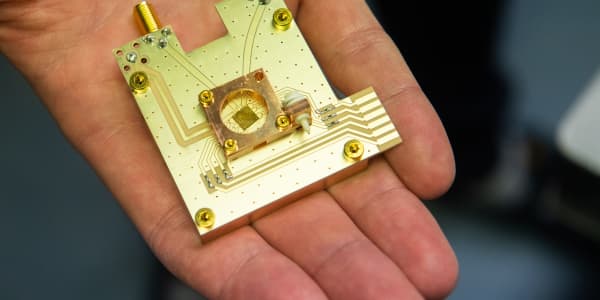Most have heard about 5G, the soon-to-be-adopted standard for mobile data. But that's just half of the picture for the next generation of high-speed internet.
The future for homes, business and many public places will be using a different technological innovation: Wi-Fi 6.
The combination of that new wireless tech and 5G will represent the next big shift in connectivity and data, said Irving Tan, senior vice president and chief of operations at Cisco.
The new internet technology will be a huge speed boost to the existing Wi-Fi and it will allow users to access the internet in congested areas without compromising the battery life of their devices.
As of March this year, nearly 57% of the world's population is connected to the internet, according to Internet World Stats. The future of digital connectivity is seen as an important strategic asset, and many countries — especially including China and the U.S. — are competing for control.
Countries are fighting each other over cellular equipment for wireless carriers around the globe, and companies are going head-on in competition to deliver the faster networks for consumers.
As for how the next version of Wi-Fi fits into the equation, Tan said it will work in conjunction with the new and improved data networks.
"Service providers will want to be able to offload peak traffics on 5G, onto Wi-Fi 6 in order to remove congestion ... and create a seamless experience for customers," he explained.
Tan added that the main difference between 5G and Wi-Fi 6 compared to the current networks is the ability to upgrade "experiences such as industrial automation, autonomous vehicles, virtual reality, (and) augmented reality capabilities."
Adaption of the technology
The need for wider bandwidth and faster internet speed is a response to the world's growing demand for connectivity. The newest generation of Wi-Fi technology is reportedly set to launch in late 2019 and is set to not only transform experiences for consumers but also institutions.
One of the most significant applications for the new standard will be the so-called Internet of Things. That will connect physical devices — such as home appliances and cars — to the internet, allowing them to talk with each other and for users to control everything seamlessly.
The faster internet will enable "very advanced IoT applications," Tan projected.
And all of that, according to the Cisco exec, will mean more internet usage than ever before: "We anticipate that, by 2022, the amount of traffic generated in the single year will represent the entire last 32 years of the internet combined."
"It is no longer about human-to-device connectivity. It's going to be driven by a lot of machine-to-machine connectivity," he added.
By 2020, there will be 6.58 network-connected devices per person around the globe, according to research firm Statista. With a total world population of over 7.5 billion people, that means there could be nearly 50 billion such devices by 2020.
But beyond specific applications, he said, "it's all about data at the end of the day."
The adaption of the fast-speed internet technology will enable businesses and governments to collect extensive data, and thereby improve their services, Tan explained. The real challenge, he added, will be finding ways to make money out of all that information.





